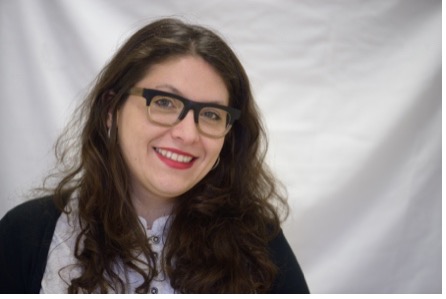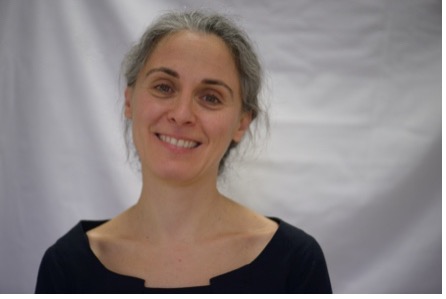
Sonja Mujcinovic
Department of English Philology
University of Valladolid
sonja.mujcinovic@uva.es
website

Raquel Fernández Fuertes
Department of English Philology
University of Valladolid
raquelff@uva.es
website
 |
Sonja Mujcinovic Department of English Philology University of Valladolid sonja.mujcinovic@uva.es website |
 |
Raquel Fernández Fuertes Department of English Philology University of Valladolid raquelff@uva.es website |
| Participants: | 106 |
| Type of Study: | experimental |
| Location: | Bosnia, Denmark, Spain |
| Media type: | no audio |
| DOI: | doi:10.21415/CKSF-CH67 |
Mujcinovic, S., (2020). English subjects in the linguistic
production of L1 Spanish, L1 Bosnian and L1 Danish speakers: comparative
grammar, typological similarity and transfer [Unpublished doctoral
dissertation]. University of Valladolid.
Mujcinovic, S., (2015). The analysis of subjects in the oral and
written production of L2 English learners: transfer and language
typology. In Pedro A. Fuertes-Olivera et al. (eds.), Current Work in
Corpus Linguistics: Working with Traditionally-conceived Corpora and
Beyond. Selected Papers from the 7th International Conference on Corpus
Linguistics (CILC2015). Procedia Social and Behavioral Sciences.
Amsterdam: Elsevier
In accordance with TalkBank rules, any use of data from this corpus
must be accompanied by at least one of the above references.
The aim of this project is to deal with typological
difference/similarity with a focus on sentential subjects. In order to
do so, both oral and written production data from a total of 106
sequential bilingual children were elicited. For all the children
English was their L2 and they differ in their L1 (i.e., Spanish, Bosnian
or Danish). This way we could focus on L2 English production when two
typologically similar languages are in contact in the case of Danish and
English (both being [-null subject] languages), as well as when two
typologically different languages are in contact in the case of Spanish
and Bosnian with English (the first ones being [+null subject]
languages, while English is [-null subject]). Together with typological
similarity, these data have also been elicited to address modality
(i.e., oral and written production data) and time of exposure (i.e.,
data from participants with 2 and 4 years of exposure to English).
The purpose of this dataset was to deal with the potential
interactions between typology, exposure and modality in order to further
characterize L1 transfer. The data elicitation was conducted in 2014 and
2015.
The 106 participants that took part in this study are L2 English
children, who were first classified into three groups according to their
L1 (Spanish, Danish or Bosnian) and then subclassified into two more
groups each, according to the time they have been instructed in the L2
(2 years or 4 years) (see table below). The data were collected in the
schools the participants attended in the country where they lived (i.e.,
Spain, Denmark and Bosnia).
The criteria applied when selecting the participates were the following:
The BO folder is for Bosnian; the DK folder is for Danish; and the SP folder is for Spanish.
The Spanish students came from Valladolid; the Danish students came from Soroe; and the
Bosnian students came from Banja Luka. Students in folder 1 had two years of L2 English
and students in folder 2 had 4 years of L2 English
The data from the oral task were elicited via a semi-guided
interview. The questions asked were formulated so that the participants
would answer with complete sentences. If this was not the case, they
were encouraged to do so.
The participants were interviewed individually and voice recorded at
their schools. Each individual interview lasted 8 to 16 minutes. Even
though a protocol with different topics proposed was established (e.g.,
family, hobbies, interests, school, preferences, music, friends, etc.),
the participants were encouraged to talk about any desired topic.
The data from the written task were elicited via a wordless picture
sequence task adapted from the A1-ball story from the Edmonton Narrative
Norms Instrument (ENNI) (Schneider et al. 2005;
http://www.rehabresearch.ualberta.ca/enni/). The story consists of five
pictures that showed an elephant and a giraffe playing with a ball.
The changes that have been made to the original ENNI story are
related to the characters and their biological gender. Thus, the
characters in the adapted version are Mary Giraffe and Tom Elephant.
The participants were instructed in their L1. The task was conducted
in a classroom where the whole class participated together. The pictures
were projected on a screen for all to see. After seeing the story, the
participants had one hour in total to complete the task and they were
allowed to ask for vocabulary which, in the case of verbs, was provided
to them in a non-inflected form.
Audio-recordings and transcriptions were done by Sonja Mujcinovic,
Luis Miguel Toquero Pérez y Tamara Gómez Carrero. This study has been
conducted as part of the activities of the UVALAL (University of
Valladolid Language Acquisition Lab) research group.
Funding was supplied by these sources:
Project Description
Participants
L1 group # age years instruction
Spanish 1 13 9-10 2
- 2 20 11-12 4
Bosnian 1 17 11-12 2
- 2 22 12-13 4
Danish 1 16 11-12 2
- 2 18 12-13 4
Oral task
Written task
Acknowledgements